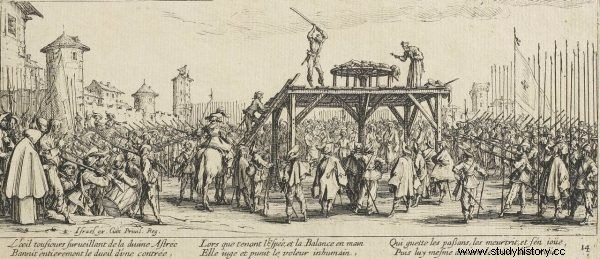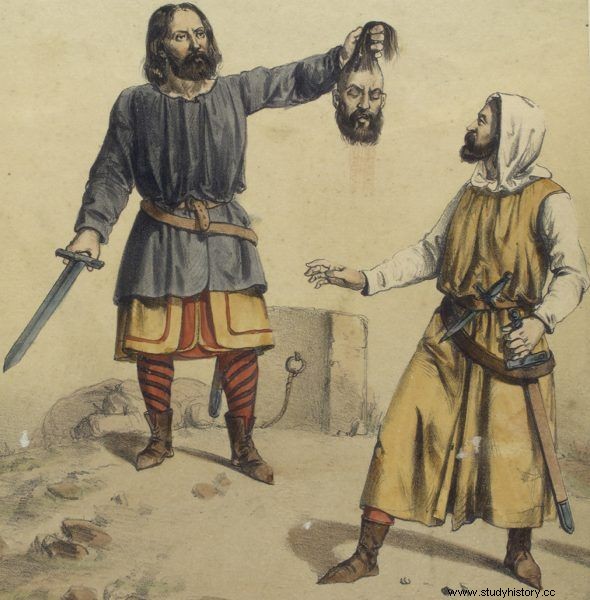Torture is an inseparable element of the modern vision of the Middle Ages. It is not often mentioned, however, that after the torment it was time for treatment, and the pain - before the doctors - started to be dealt with by lawyers ...
Among other important works, surgeon William of Saliceto wrote a textbook with the telling name On the Injuries of People Tortured by Flogging and Limb hanging . According to his notes, there were many people rehabilitated after various types of torture, so the problem from the physician's perspective qualified for a complete set of solutions. However, torture and pain attracted far more attention from lawyers than from doctors. As Esther Cohen writes:
While doctors tried to diagnose, interpret and treat pain, the judges were the opposite. They, too, were learned professionals, writing consul before doctors even dreamed of them. Unlike doctors, however, their roots followed closely to Roman law. It was there that they found justification for torture and the basic literature on torture. [...] The number of judges who devoted their treatises and opinions to torture and related topics is very large.
Medieval spa
The famous Saliceto surgeon has gone down in history as an eulogist of cleanliness, suggesting frequent baths for newborns and greater hygiene for pregnant mothers. He also opposed Galen's view that suppuration of the wound was a good sign of healing, and that his methods were so successful that, thanks to William's disciple Lanfranc of Milan, they were readily adopted in France as well. It turns out that in his works he also devoted a lot of space to victims of torture.

Torture is an inseparable element of the modern vision of the Middle Ages.
In order to understand the situation of people subjected to torture in the Middle Ages, it is worth getting acquainted with the most popular methods of tormenting convicts. In the study by Piers Michella we read:
Typical torture methods used by the Inquisition since the thirteenth century include slinging, stretching, and burning with fire. During the suspension, the interviewee's feet were weighted and then lifted up with a rope attached to the wrists entwined behind the back. The reel was used to lift the tortured person and then lower him abruptly, which resulted in the knocking out of the shoulder joints.

Circle breaking was a popular method of torture.
William's notes also concerned, inter alia, people beaten on the soles of their feet. “ He suggested, for example, wrapping a torture victim in a skin that was still warm, freshly stripped off a horse. After this treatment, he recommended relaxing baths and a low-fat diet ”Describes Nathan Belofsky.
The idea of wrapping the patient in the skin was picked up by Guy de Chauliac, known today as the "father of surgery". In addition to a prescription for an animal's fleece still warm, he recommended covering the executioner's victim with fresh horse manure. The method may be associated with kicking a person lying down, but ... it certainly could not significantly worsen the condition of a person who was previously broken with a wheel. Guy de Chauliac was in principle a sane physician, also instructing not to try to heal people who were already dead.
Good executioner, bad executioner
People with extensive medical knowledge also turn out to be ... the torturers themselves! The healing practices of the executioners, however, were often not aimed at the actual cure of the patient, but only to keep him alive in order to… be able to torture him further.
Nevertheless, due to their profession, executioners had above-average knowledge of human anatomy, blood flow and the role of individual organs. Therefore, it was possible to contact a representative of this disliked profession for help in the event of an accident - he was able to protect the wound. It even got to the point that the healing services of executioners were covered by special regulations. Nathan Belofsky reports:
Like doctors, they had to have the appropriate permissions. Historian Kathy Stuart in the book Defiled Trades and Social Outcasts writes about one candidate who claims to heal horses well, and others who admit that they are too old to behead people. The executioners took an oath, assuring them that they had never murdered anyone and that they would not work with Jews. Frederick the Great insisted that his healers undergo special written examinations .
The daemon can't be helped
It also happened that the doctors themselves directed the torture - and that as part of (in their opinion) therapy. When devil or demon possession became a recognized disease, medics were called to investigate and diagnose the case. Most often, after being accused of dealing with unclean forces, the doctor looked for signs of dark forces on the patient's body (unspecified "devilish stigmas"). If he found them, he sent the patient to the torture chamber. There, of course, the "sick" confessed to everything - because he was left with no choice.

The executioners also happened to heal victims of torture.
Devilish gibberish was mixed with the few voices against the torture of innocent people, and the world was yet to hear about mental illness or epilepsy. The famous Ambrose Pare himself diagnosed possession in an epileptic patient and openly proclaimed that witches should not be allowed to live.
Did the same doctors who prescribed torture for possession cures later treat "recovered" patients? Perhaps they actually looked after their wounds, but they did not know the methods of treating mental illnesses or preventing epilepsy attacks until the most recent times. Meanwhile, many of the damage caused by torture - both to the body and mind - is still not effectively treated by medicine today. But as the civilized world openly condemns torture, Amnesty International reports that it is still used unofficially in many countries, including the US, China and Russia.
Bibliography:
- Belofsky, N., How was treated in the past . RM publishing house, Warsaw, 2014
- Mitchell, P., The Torture of Military Captives in the Crusades to the Medieval Middle East . University of London 2006.
- Cohen, E., The Modulated Scream:Pain in Late Medieval Culture . University of Chicago Press, 2009.
